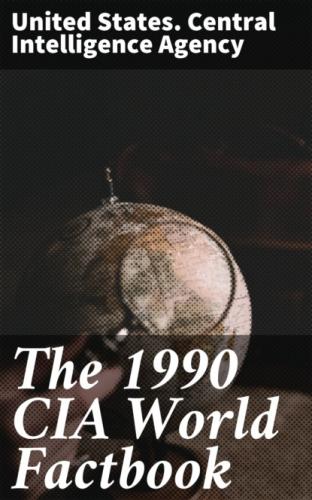GNP: $72.0 billion, per capita $2,217; real growth rate - 5.5% (1989 est.)
Inflation rate (consumer prices): 4,925% (1989)
Unemployment rate: 8.5% (1989 est.)
Budget: revenues $11.5 billion; expenditures $13.0 billion, including capital expenditures of $0.93 billion (1988)
Exports: $9.6 billion (f.o.b., 1989); commodities—meat, wheat, corn, oilseed, hides, wool; partners—US 14%, USSR, Italy, Brazil, Japan, Netherlands
Imports: $4.3 billion (c.i.f., 1989); commodities—machinery and equipment, chemicals, metals, fuels and lubricants, agricultural products; partners—US 25%, Brazil, FRG, Bolivia, Japan, Italy, Netherlands
External debt: $60 billion (December 1989)
Industrial production: growth rate - 8% (1989)
Electricity: 16,449,000 kW capacity; 46,590 million kWh produced, 1,460 kWh per capita (1989)
Industries: food processing (especially meat packing), motor vehicles, consumer durables, textiles, chemicals and petrochemicals, printing, metallurgy, steel
Agriculture: accounts for 15% of GNP (including fishing); produces abundant food for both domestic consumption and exports; among world's top five exporters of grain and beef; principal crops—wheat, corn, sorghum, soybeans, sugar beets; 1987 fish catch estimated at 500,000 tons
Aid: US commitments, including Ex-Im (FY70–88), $1.0 billion; Western (non-US) countries, ODA and OOF bilateral commitments (1970–87), $3.6 billion; Communist countries (1970–88), $718 million
Currency: austral (plural—australes); 1 austral (A) = 100 centavos
Exchange rates: australes (A) per US$1—1,930 (December 1989), 8.7526 (1988), 2.1443 (1987), 0.9430 (1986), 0.6018 (1985)
Fiscal year: calendar year
- Communications Railroads: 34,172 km total (includes 169 km electrified); includes a mixture of 1.435-meter standard gauge, 1.676-meter broad gauge, 1.000-meter gauge, and 0.750-meter gauge
Highways: 208,350 km total; 47,550 km paved, 39,500 km gravel, 101,000 km improved earth, 20,300 km unimproved earth
Inland waterways: 11,000 km navigable
Pipelines: 4,090 km crude oil; 2,900 km refined products; 9,918 km natural gas
Ports: Bahia Blanca, Buenos Aires, Necochea, Rio Gallegos, Rosario,
Santa Fe
Merchant marine: 131 ships (1,000 GRT or over) totaling 1,693,540
GRT/2,707,079 DWT; includes 45 cargo, 6 refrigerated cargo, 6 container,
1 roll-on/roll-off cargo, 1 railcar carrier, 48 petroleum, oils, and lubricants
(POL) tanker, 2 chemical tanker, 4 liquefied gas, 18 bulk
Civil air: 54 major transport aircraft
Airports: 1,799 total, 1,617 usable; 132 with permanent-surface runways; 1 with runways over 3,659 m; 30 with runways 2,440–3,659 m; 335 with runways 1,220–2,439 m
Telecommunications: extensive modern system; 2,650,000 telephones (12,000 public telephones); radio relay widely used; stations—171 AM, no FM, 231 TV, 13 shortwave; 2 Atlantic Ocean INTELSAT earth stations; domestic satellite network has 40 stations
- Defense Forces
Branches: Argentine Army, Navy of the Argentine Republic, Argentine Air
Force, National Gendarmerie, Argentine Naval Prefecture, National Aeronautical
Police Force
Military manpower: males 15–49, 7,860,054; 6,372,189 fit for military service; 277,144 reach military age (20) annually
Defense expenditures: 1.4% of GNP (1987)—————————————————————————— Country: Aruba (part of the Dutch realm) - Geography Total area: 193 km2; land area: 193 km2
Comparative area: slightly larger than Washington, DC
Land boundaries: none
Coastline: 68.5 km
Maritime claims:
Exclusive fishing zone: 12 nm;
Territorial sea: 12 nm
Climate: tropical marine; little seasonal temperature variation
Terrain: flat with a few hills; scant vegetation
Natural resources: negligible; white sandy beaches
Land use: 0% arable land; 0% permanent crops; 0% meadows and pastures; 0% forest and woodland; 100% other
Environment: lies outside the Caribbean hurricane belt
Note: 28 km north of Venezuela
- People
Population: 62,656 (July 1990), growth rate 0.2% (1990)
Birth rate: 16 births/1,000 population (1990)
Death rate: 6 deaths/1,000 population (1990)
Net migration rate: - 8 migrants/1,000 population (1990)
Infant mortality rate: 8 deaths/1,000 live births (1990)
Life expectancy at birth: 72 years male, 80 years female (1990)
Total fertility rate: 1.8 children born/woman (1990)
Nationality: noun—Aruban(s); adjective—Aruban
Ethnic divisions: 80% mixed European/Caribbean Indian
Religion: 82% Roman Catholic, 8% Protestant; also small Hindu, Muslim,
Confucian, and Jewish minority
Language: Dutch (official), Papiamento (a Spanish, Portuguese, Dutch,
English dialect), English (widely spoken), Spanish
Literacy: 95%
Labor force: NA, but most employment is in the tourist industry (1986)
Organized labor: Aruban Workers' Federation (FTA)
- Government
Long-form name: none
Type: part of the Dutch realm—full autonomy in internal affairs obtained in 1986 upon separation from the Netherlands Antilles
Capital: Oranjestad
Administrative divisions: none (self-governing part of the Netherlands)
Independence: planned for 1996
Constitution: 1 January 1986
Legal system: based on Dutch civil law system, with some English common law influence
National holiday: Flag Day, 18 March
Executive branch: Dutch monarch, governor, prime minister, Council of
Ministers (cabinet)
Legislative branch: unicameral Parliament (Staten)
Judicial branch: Joint High Court of Justice
Leaders: Chief of State—Queen BEATRIX Wilhelmina Armgard (since 30 April 1980), represented by Governor General Felipe B. TROMP (since 1 January 1986);
Head of Government—Prime Minister Nelson ODUBER (since NA February 1989)
Political parties and leaders: Electoral Movement Party (MEP),
Nelson Oduber; Aruban People's Party (AVP), Henny Eman; National
Democratic Action (ADN), Pedro Charro Kelly; New Patriotic Party (PPN),
Eddy Werlemen; Aruban Patriotic
